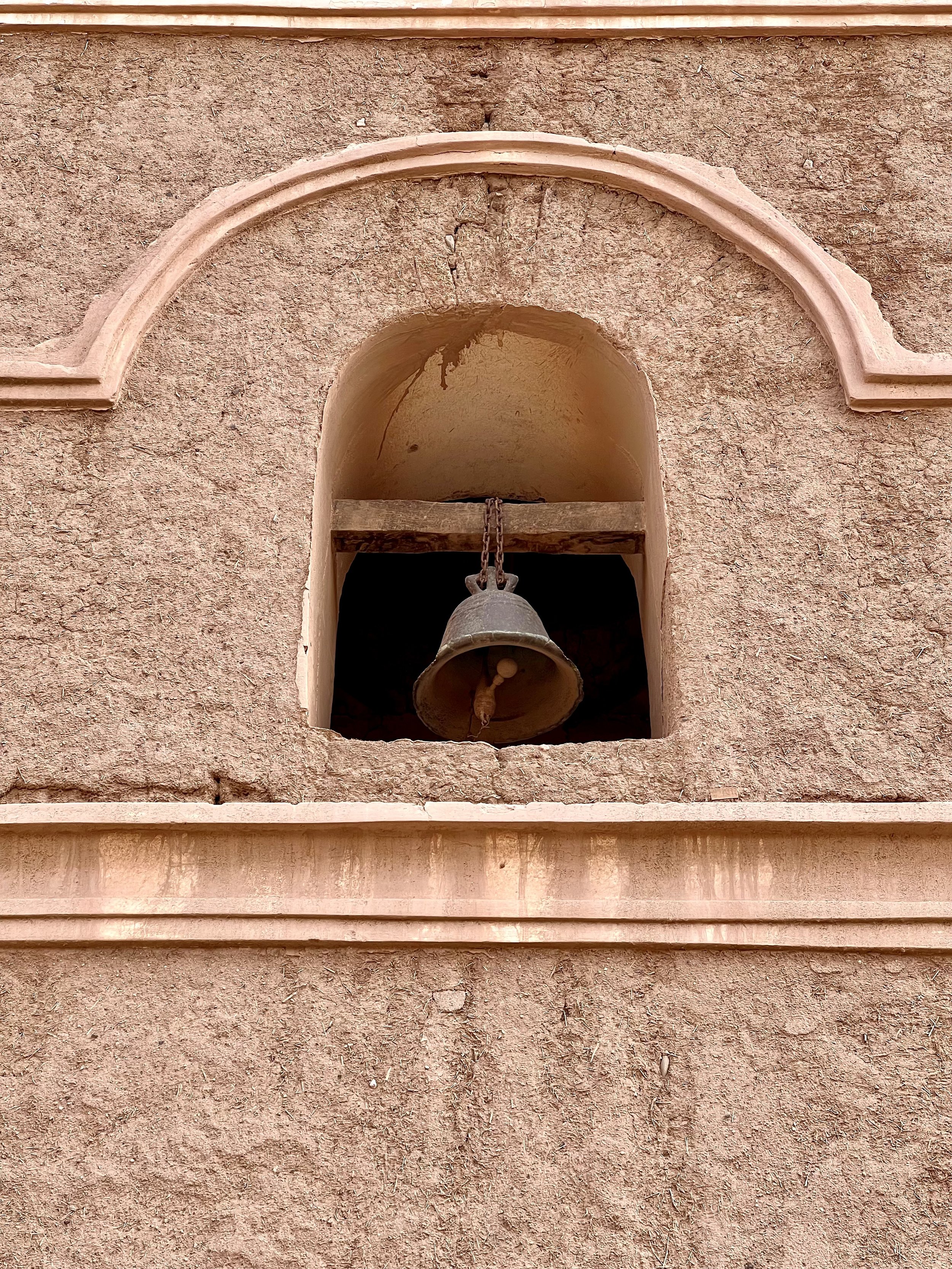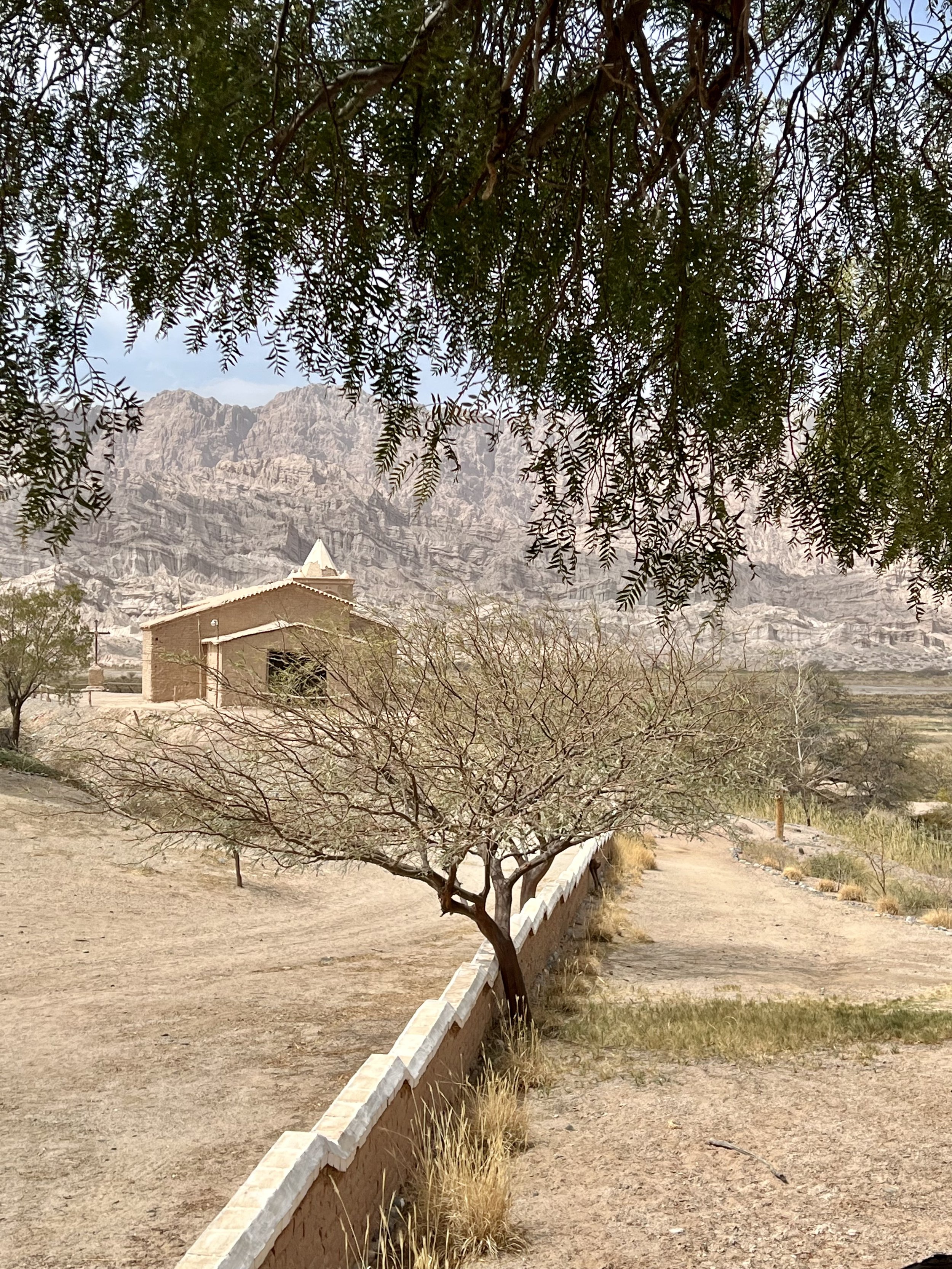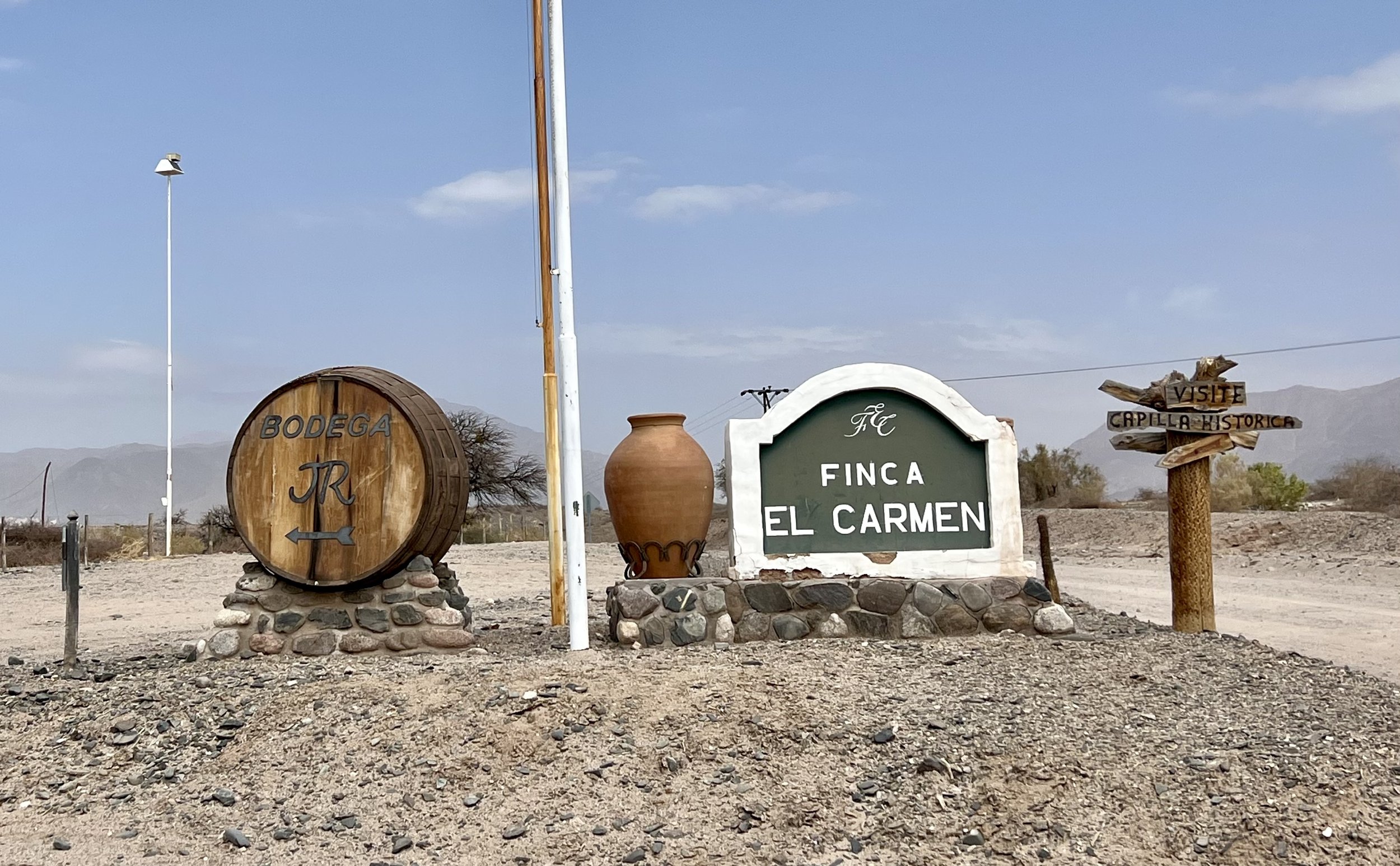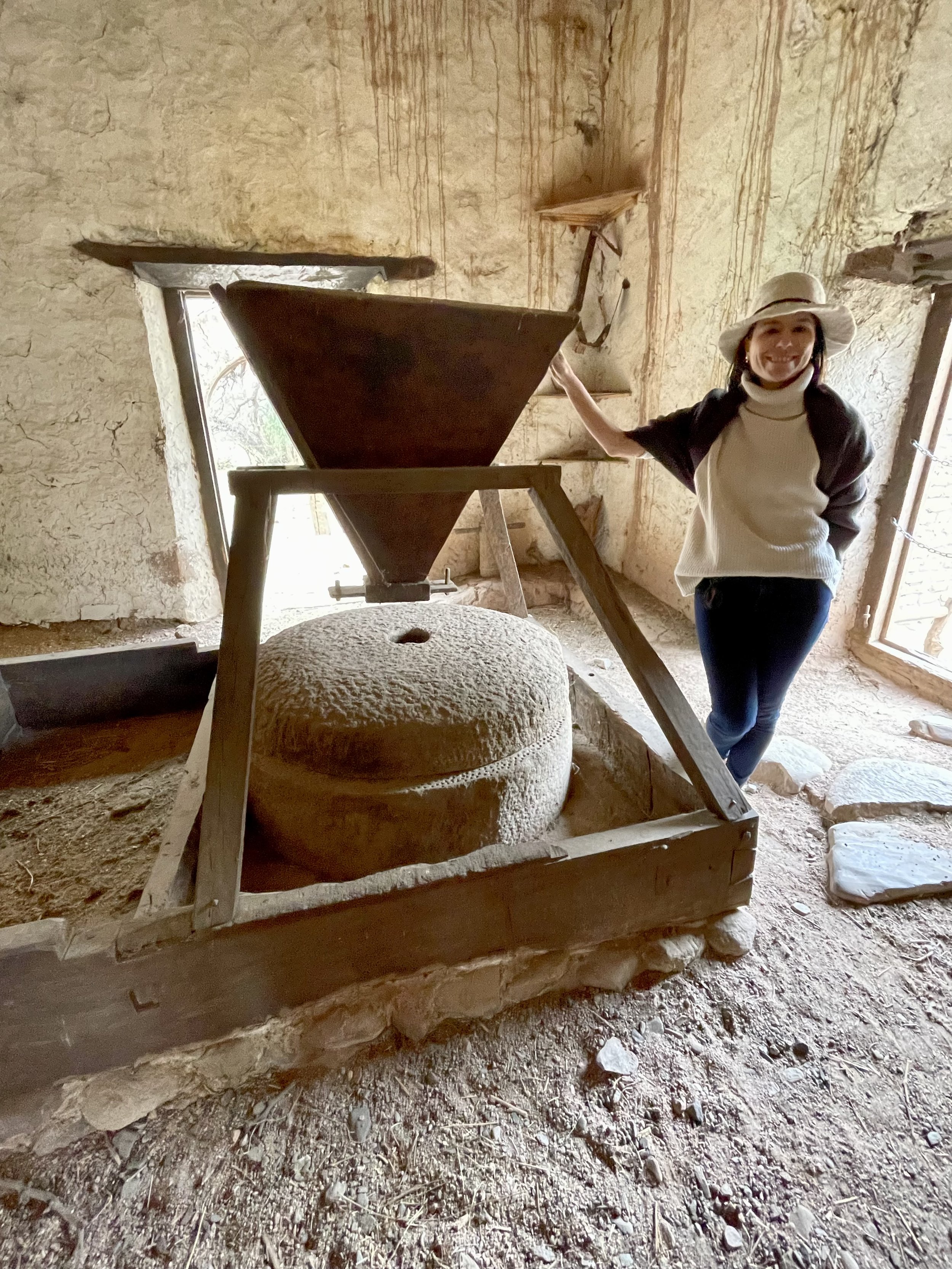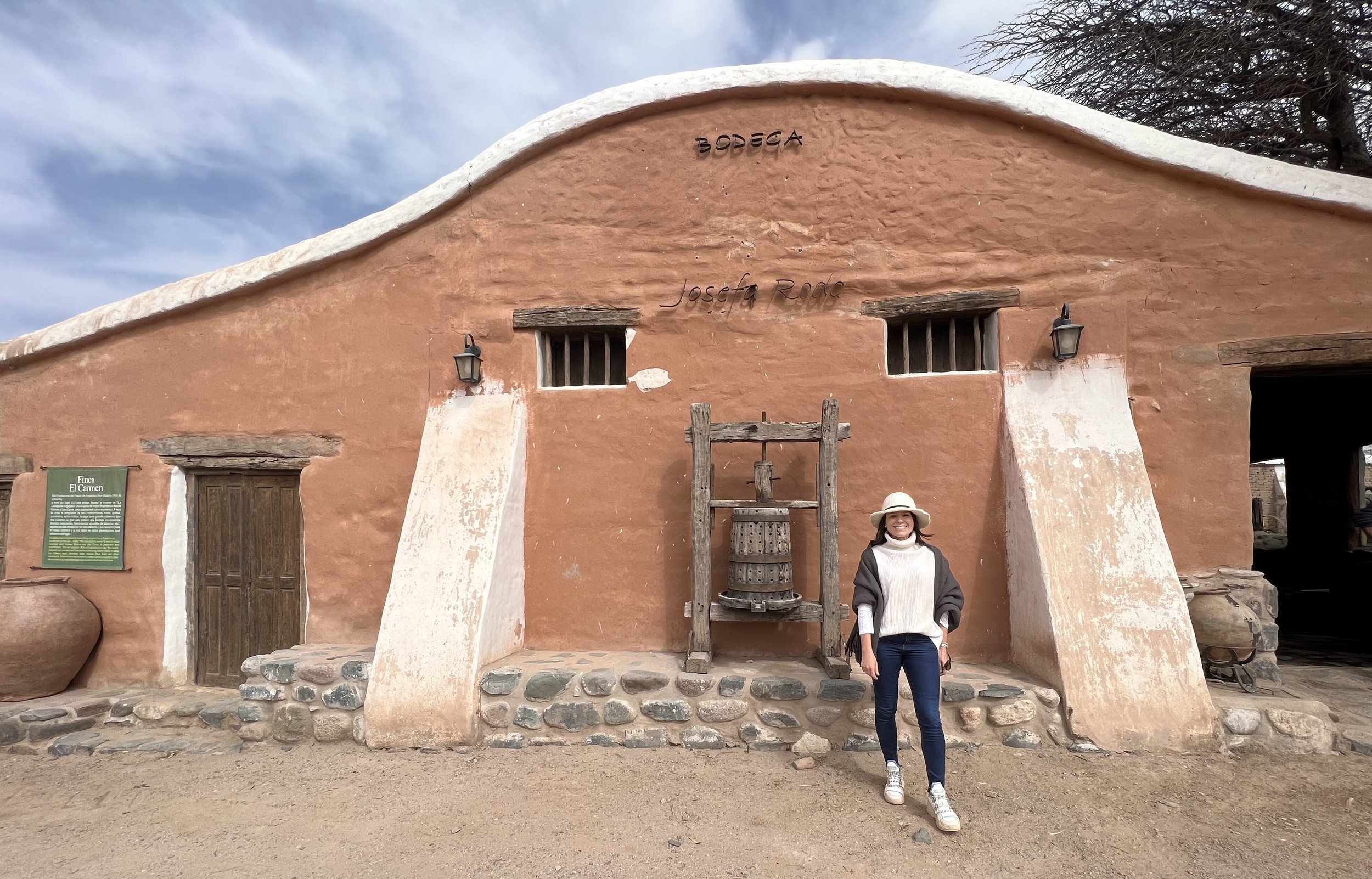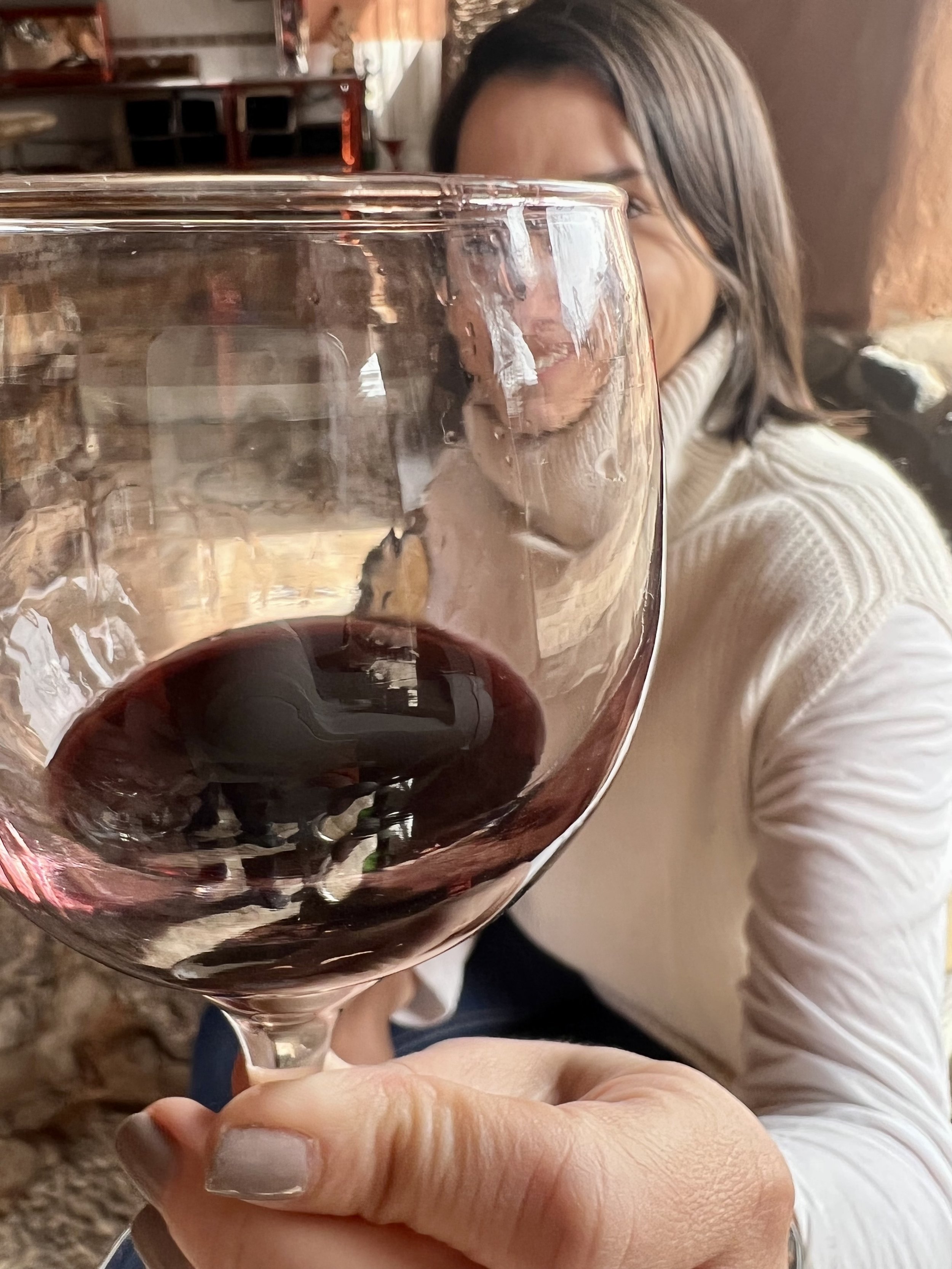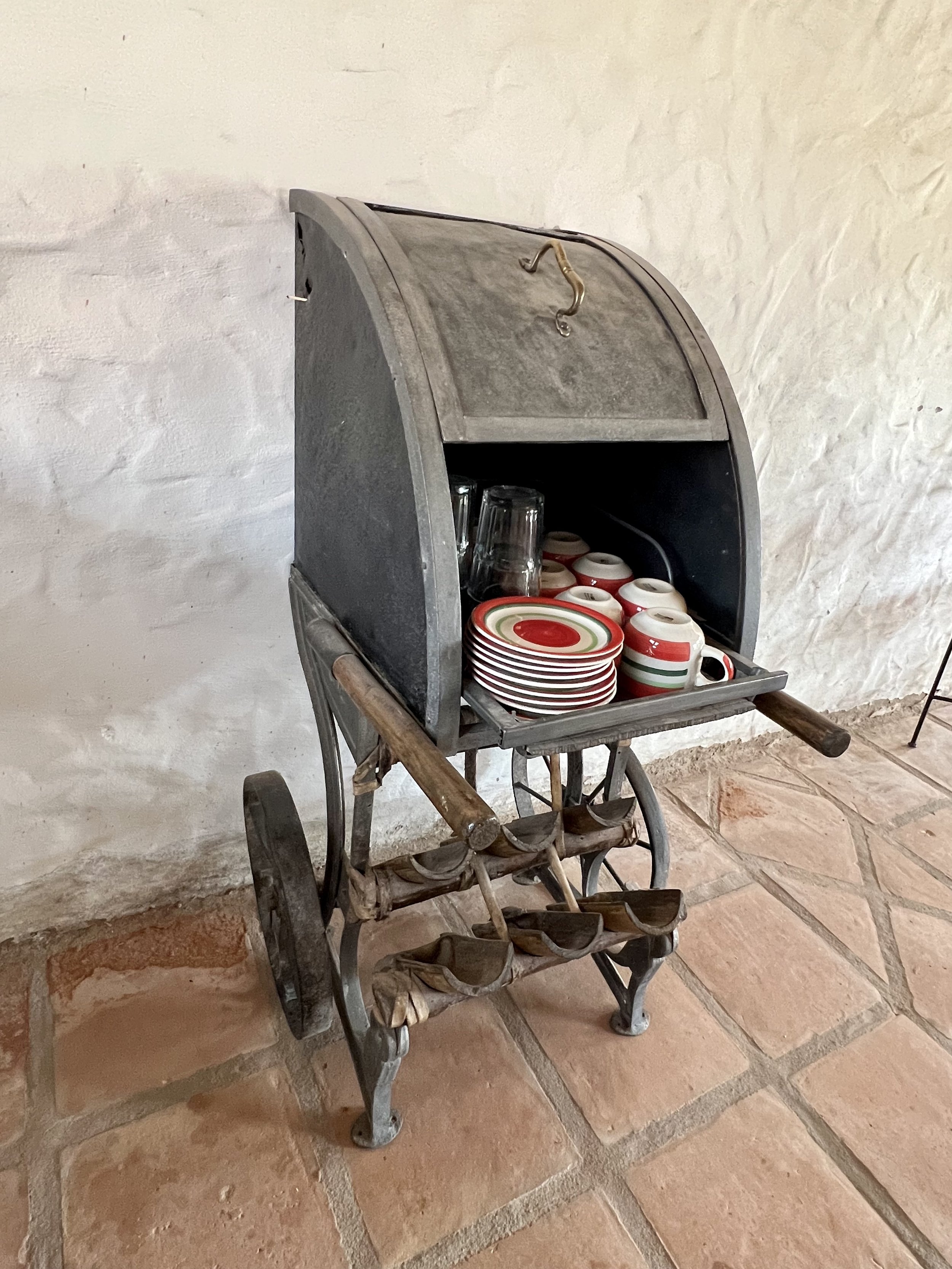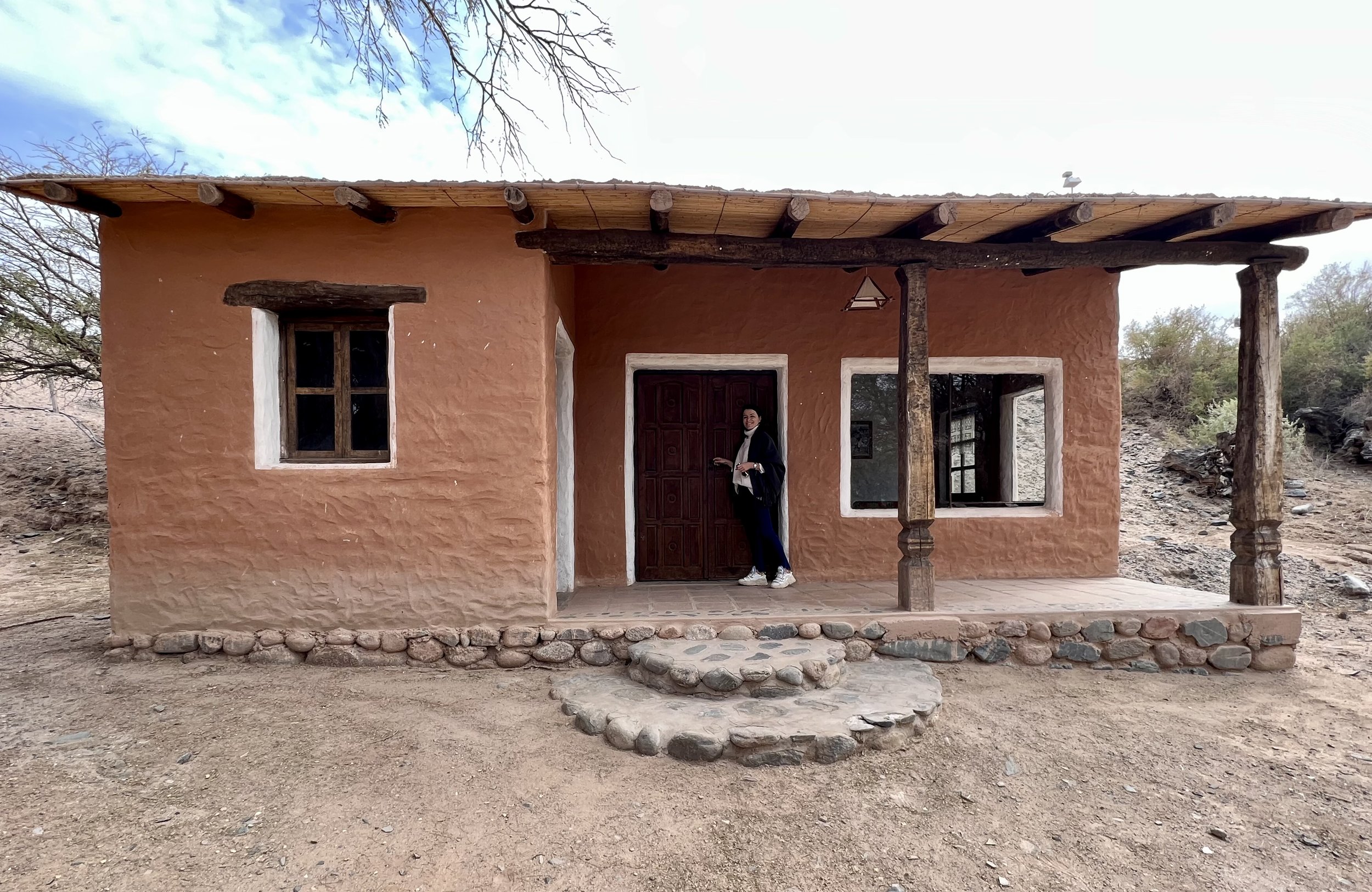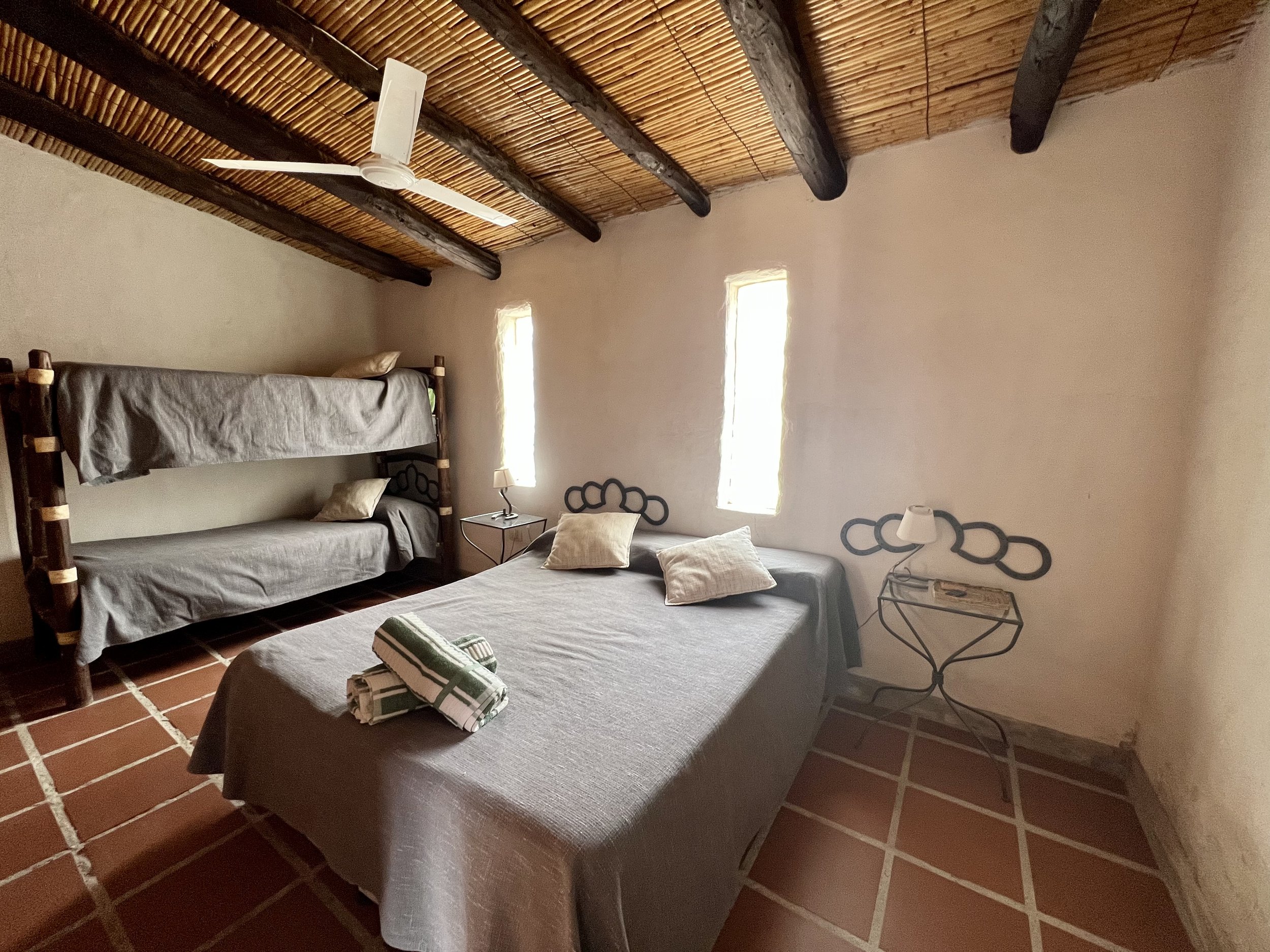Finca El Carmen
Historic church in Angastaco At the first site where Angastaco, was settled, about eight kilometers from the current town, is located Finca El Carmen.
The farm has belonged to the Miralpeix family since the beginning of the 20th century. The story tells that three young Catalans, Juan, José and Joaquín, from San Hilario Sacalm, were convinced in the middle of the war by priest Terrez to sail across the ocean and settle in the Calchaquí Valleys. As soon as they arrived, they worked for a while in Finca La Paya, near Cachi, until they acquired a small fortune that allowed them to buy the Angastaco farm.
The story is told by Emiliano Miralpeix, who welcomes us on a dusty Sunday at the end of August.
He immediately takes a bunch of keys and leads us to the church. He goes on to tell us that Juan, the youngest of the brothers, perhaps the most adventurous and daring, left for Panama, where the job offer was interesting due to the construction of the Canal. Then, José and Joaquín stayed behind.
José, Emiliano's great-great-grandfather, was the one who continued the work on the farm.
There was already a church there, finished in 1783 by Father Pedro Pablo del Sueldo y Ríos. It was probably a cathedral for the time.
It is located facing east, towards the Sierra del Tonco, a rocky formation that ends - further south - in the Quebrada de las Flechas. A branch of the Qhpaq Ñan, the Inca Trail, passed through these rocky slopes.
The landscape is imposing. To the side a missionary cross finishes composing a scene of another time. Emiliano opens the massive carved door, just when the August wind begins to blow stronger, as if accentuating the mystery. Solemn, colorful, simply beautiful. It has two altars, a pulpit, a confessional made of cardons and the corresponding sacristy. His grandfather Leopoldo was the one who -together with his grandmother Gloria Arselan- rebuilt it.
The images," says Emiliano, "are original, brought from Cuzco. The Viacrucis, singularly, is written in French and there is no explanation for it: another mystery.
During these works they found the coffin of a totally mummified baby girl. Some time later it was Emiliano who found on the outskirts of the church another coffin with the body of another child, whose skin is stiffened, but whose gesture is intact. More than creepy, the state of preservation is striking.
The farm once belonged to Indalecio Gómez, in fact it bears the name Carmen in honor of his granddaughter, daughter of Martín Gómez and Carmen Felicidad González.
Carmen Gómez González married a Bolivian general named Flores, who was exiled there during the civil war.
Masses are celebrated in the historic church once a month.
After the impressive tour of the centenary church of adobe, cane roof and colorful ornaments, Emiliano guides us to the museum that he put together with his father, Ricardo, with rural work elements that were collected in the extensive property. There is a small hydroelectric power plant that they built to explain to visitors how the old mill used to work. It is a hydraulic circuit represented in a large model.
Next, a visit to the exhibition room of their miniature carriages. Ricardo and Emiliano's dedication, patience and dexterity in their manual work is surprising.
We conclude the visit with a tour of the Josefa Rodó winery. It bears the name of his great-grandmother, married to his first cousin Emiliano Miralpeix. After the wine tasting, we rested in the cabin that would be our home for the night. The lodging is a typical rural tourism property and invites you to live the experience of a traditional farm in the Calchaquíes Valleys.
A few minutes away you can visit the village of Angastaco, a small village with modern architecture but with an atmosphere of other distant times.
There we were surprised by the small artisan winery of Jorge Flores called "Que tal" (sic), where he produces a red wine and a pink mistela. He is a cheerful and witty native of Angastaco who opens the doors of his house with affability and invites the visitor to discover the whole manufacturing process of his product. He is funny, entertaining, and well worth a visit.
We return to Finca El Carmen for an early dinner and rest. In the morning, a country breakfast, a quick visit to the abandoned cemetery on the other side of route 40, where four hundred year old tombs can be found, and then we leave to visit the Brealito Lagoon.





